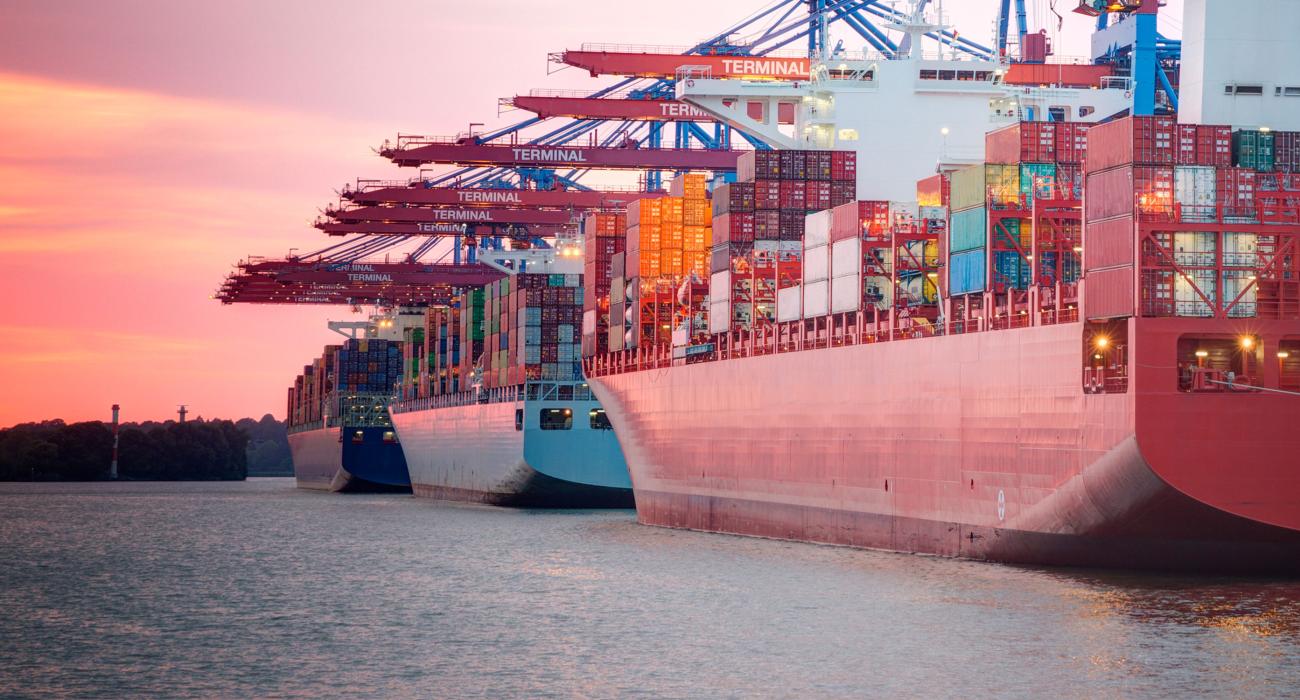FAQS
Q: Trump issued an Executive Order called the “America First Trade Policy” on his first day in office. What does it say?
A: On January 20, 2025, President Trump introduced the “America First Trade Policy” through an Executive Order (EO) to review a wide range of trade policies. While no new tariffs are imposed by the EO, the possibility of such action on several fronts will be explored. Among other things, Trump instructs agencies to take the following actions:
- Department of Commerce (Commerce) and the United States Trade Representative (USTR) to analyze the persistent trade deficit and whether “a global supplemental tariff” is necessary.
- The Department of the Treasury (Treasury), Commerce and US Customs and Border Protection (CBP0 are tasked with exploring the creation of an External Revenue Service to collect and tally tariff revenue.
- USTR to seek public comment on the United States-Mexico-Canada Agreement (USMCA) ahead of the July 2026 review and to assess its impact on American jobs and businesses.
- Commerce and the Department of Homeland Security (DHS) to assess unlawful migration and fentanyl flows from Canada and Mexico to determine whether trade measures such as tariffs are necessary.
- USTR to review the existing Phase One Trade deal with China and the Section 301 report issued in May 2024 and recommend actions.
The agencies involved are required to report their findings and recommendations to the President by April 1, 2025, setting the stage for potential policy adjustments and new initiatives.
Q: What are the possible legal authorities that the Trump administration could use to implement tariffs?
A: During his first term, President Trump revived long-dormant trade authorities to impose tariffs. Section 232 was used for the first time since 1986 to address national security concerns, leading to steel and aluminum tariffs, while Section 301 imposed duties on over $370 billion in Chinese goods to counter unfair trade practices, marking its first major use since 1995. Other potential authorities include the International Emergency Economic Powers Act (IEEPA), which allows swift action following a declared national emergency, though it has not yet been used for tariffs. Less likely options include Section 338 of the Tariff Act of 1930, permitting retaliatory duties for discriminatory practices, and Section 122 of the Trade Act of 1974, which allows temporary tariffs capped at 15% for 150 days but has limited scope.
Q: What is Section 232 of the Trade Expansion Act of 1962?
A: Section 232 allows the President to impose tariffs if imports threaten national security. The Department of Commerce must investigate and report within 270 days, after which the President has 90 days to act. While focused on national security, the broad interpretation of “threat” has led to legal challenges and WTO scrutiny. There is no Congressional oversight authority, and tariffs can take effect slightly over a year after the investigation’s start.
Q: What is Section 301 of the Trade Act of 1974?
A: Section 301 empowers the US Trade Representative (USTR) to address unfair foreign trade practices or violations of trade agreements that burden or restrict US commerce. Investigations typically conclude within 12 months, and confirmed violations can lead to tariffs or other import restrictions. While the use of Section 301 authority does contain some minor substantive and procedural checks, it grants the President significant discretion in implementing them without Congressional oversight.
Q: What is the International Emergency Economic Powers Act (IEEPA)?
A: IEEPA allows the President to impose trade restrictions to address unusual or extraordinary threats to national security, foreign policy, or the economy. Unlike other authorities, IEEPA requires no investigation, enabling rapid implementation of tariffs within days of the emergency declaration. However, Congress must first notify Congress before exercising any authority and provide bi-annual reports to Congress with updates until the emergency is declared over. While IEEPA is regularly used to impose embargoes or sanctions, no President has yet relied upon IEEPA to place tariffs on imported products. Congress can exercise oversight by terminating the national emergency declaration through a joint resolution, a difficult procedural hurdle.
Q: Trump has threatened to impose higher tariffs on imports from specific countries, like China, Canada, and Mexico. How does the government determine the country of origin of those imports?
A: The government uses different tests to determine the country of origin depending on the purpose. For trade remedies such as Section 232 and Section 301 tariffs, the country of origin test used is known as “substantial transformation.” Under this standard, the country of origin is where a product undergoes a change that results in a new and distinct article with a different name, character, or use. The substantial transformation test is highly fact-specific and depends on several factors, which often includes the nature of the processing performed, the extent of changes to the product’s essential characteristics, and the amount of value added during the transformation. For example, simple assembly or minor processing may not constitute substantial transformation, while more complex manufacturing processes likely will. Determining what qualifies as substantial transformation has been heavily litigated and disputed in both courts and administrative forums, such as US Customs and Border Protection (CBP). These disputes often focus on the nuances of specific manufacturing steps and their impact on the product’s final identity, leading to varying interpretations in different cases.
Q: If a tariff only applies to certain goods, how are those goods identified?
A: The government relies on tariff classification to target specific goods for tariffs. Every imported item is assigned a 10-digit code under the Harmonized Tariff Schedule of the United States (HTSUS), a detailed list maintained by the US International Trade Commission. These codes ensure consistency in identifying products for tariff application. During Trump’s first term, Section 301 and Section 232 tariffs were tied directly to tariff classification codes, allowing targeted application of duties on goods like steel, aluminum, and electronics. Exclusions from these tariffs were also frequently dependent on tariff classification codes, as specific products or subcategories could be exempted based on their classification. While this approach ensures clarity, it can lead to uncertainties over the proper classification, which may require further analysis to resolve.
Q: I’m an importer. If Trump imposes tariff measures and my products are included, will this impact my import bond?
A: Yes, it could, if you use a continuous bond. A continuous bond is a financial guarantee that covers all of an importer’s customs imports over a 12-month period, including the payment of duties, taxes, and fees. The bond amount is calculated based on a formula provided by US Customs and Border Protection (CBP), typically set at 10% of the total duties and fees paid in the previous year, with a minimum bond amount of $50,000. If new tariffs significantly increase your duty liability, the sufficiency of your bond may become an issue. CBP monitors bond sufficiency and may issue a bond insufficiency letter to you and your surety if your bond no longer provides adequate coverage. To avoid potential disruptions in your import operations, you should proactively assess the impact of increased tariff exposure and consider increasing the value of your continuous bond. Doing so ensures that your bond remains sufficient to meet CBP requirements and avoids delays or penalties associated with bond insufficiencies.
Q: What strategies are available to help mitigate the impact of tariffs on my imports?
A: If your imports are subject to tariffs, several strategies can help reduce the impact. A substantial transformation review can determine if your goods’ origin can be reevaluated based on processing in another country that creates a new article with a distinct name, character, or use. Similarly, a tariff classification assessment can ensure your products are classified under the correct Harmonized Tariff Schedule of the United States (HTSUS) code, potentially resulting in lower duties through a review of legal rulings and principles or compliant changes to product design or manufacturing. We also specialize in duty deferral and refund programs, such as claiming duty drawback for exported goods, utilizing foreign-trade zones (FTZs) to defer or eliminate duties, and leveraging Chapter 98 duty savings programs, including those for US goods returned or goods sent abroad for repair or alteration. Additionally, we can help you assess free trade agreement (FTA) eligibility under agreements like the US-Mexico-Canada Agreement to secure duty-free treatment. For longer-term strategies, we provide guidance on the tariff impacts of reshoring, nearshoring, and resourcing to optimize your supply chain and reduce exposure. The AFS Customs Group offers the support you need to navigate these complex mitigation options and ensure compliance with fast-evolving trade rules.
Q: How much are the additional tariffs on goods from Canada, Mexico, and China, and when do they go into effect?
A: On February 1, President Trump signed three executive orders (EOs), imposing 25% additional tariffs on goods from Mexico and Canada (except 10% for Canadian energy resources), and 10% additional tariffs on China. The additional tariffs on Chinese goods will go into effect on February 4 at 12:01am ET, but goods in transit to US before February 1 at 12:01 am ET may be exempt with the proper certification. The tariffs on goods from Canada and Mexico have been delayed for at least 30 days while the governments continue to negotiate. The additional tariffs will be levied in conjunction with existing customs duties and anti-dumping/countervailing duties on goods imported into the United States.
Q: What is the scope of products impacted by the additional tariffs on goods from Canada, Mexico, and China?
A: The orders appear to cover all products from Canada, Mexico, and China based on country of origin, but the EOs do not specify and refer to the targets as “product of” Canada, Mexico, or China. Additional details regarding the new HTSUS special tariff number will be likely included in the annex to the forthcoming Federal Register notice.
Q: Are goods entered through duty drawback or de minimis exempted from the additional tariffs on goods from Canada, Mexico, and China?
A: No, all three executive orders explicitly note that goods entered through duty drawback or de minimis are subject to additional tariffs.
Q: Are goods entered into Foreign Trade Zones covered by the additional tariffs?
A: Yes, the EOs state that goods subject to the additional tariffs and admitted into a US foreign trade zone (FTZ) on or after 12:01 a.m. Eastern Standard Time on February 4, 2025 may only be admitted in “privileged foreign status.” Upon entry for consumption from the FTZ, such a product would be subject to the rates of duty related to the classification under the applicable HTSUS subheading in effect at the time of admittance into the FTZ.
Q: Will Mexico and Canada retaliate against US exports?
A: Yes, both governments of Canada and Mexico have indicated that they will impose retaliatory tariffs on US exports.
Alerts, Podcasts, and Speaking Engagements
Our highly regarded alerts and insights provide valuable updates and analysis, empowering businesses to manage the ever-changing developments in tariffs effectively. Our team also regularly delivers presentations to further assist companies in navigating these complex changes. To stay informed and receive these timely updates directly in your inbox, click here to register for our mailing list.
Recent alerts, podcasts, and speaking engagements include:
- Trump 2.0: The Tariff Tracker, ArentFox Schiff Alert, January 17, 2025 - Present
- Tariff Tensions: Trump’s New Trade Threats Are Imminent, or Are They?, ArentFox Schiff Alert, January 29, 2025
- History of the US Customs Agency: Possible Implications of the Trump Administration’s ERS Announcement, ArentFox Schiff Alert, January 27, 2025
- Tariffs and Your Business: What Lies Ahead, Winter Fancy Food Show, January 19, 2025
- Trump’s Second Term: Implications for Tariffs and Enforcement in the Solar Industry, ArentFox Schiff Alert, January 17, 2025
- Navigating Tariff Threats Under the Trump Administration, Challenges Ahead for the EV and Battery Supply Chain, ArentFox Schiff Alert, January 17, 2025
- Key Considerations for the Construction Industry in 2025 Under President-Elect Trump, ArentFox Schiff Alert, January 17, 2025
- Here We Go Again… Trump Tariffs 2.0: What the Fashion, Beauty, and Retail Industries Should Know, ArentFox Schiff Alert, December 5, 2024
- Geopolitics: Net Zero Supply Chain, Mason ONE Energy Summit, October 29, 2024
- Tariffs and Trade Policy: A Roundtable With the ArentFox Schiff Electric Mobility Group, ArentFox Schiff Alert, October 22, 2024
- Untangling the 100% EV Import Tariffs. Supply Risks and Revenue Opportunities, The Battery Show North America, October 9, 2024







